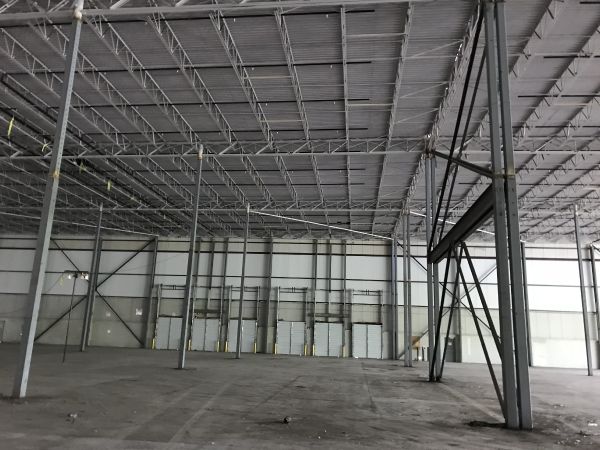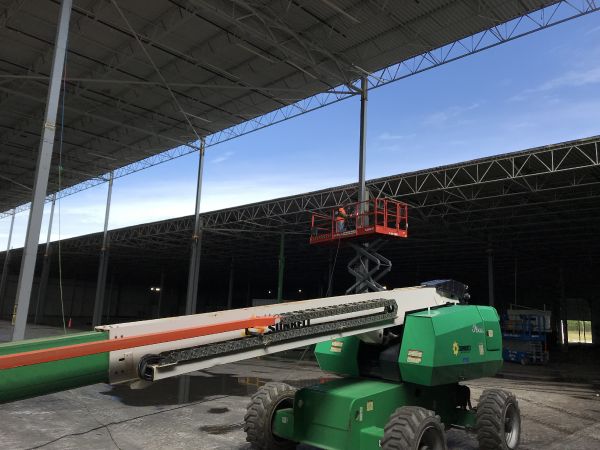Despite what some people say, location, location, location isn’t the only factor that fuels successful outcomes for a business’s physical space, although it is one of the most important.
There are 3 main factors that all businesses consider when selecting a commercial property to house their operations: location, cost, and the size and layout of the structure. Depending on the circumstances, each of these factors on their own can heavily influence the success or failure of the property.
Whether it’s a property owner with hopes of securing a stable tenant, or a retail business on a lease that hopes to become a mainstay in the neighborhood, the commercial property must be conducive to all aspects of business.
Most firms are aiming to triangulate the perfect harmony of these factors when comparing potential spaces. See why these factors weigh so heavily when choosing a location.

Location.
The location of a commercial property is one of the most critical factors in selecting a commercial property for a business.
Companies must consider the accessibility for customers, employees, suppliers, and more, as well as proximity to markets, transportation hubs like airports, highways, and public transit. These factors can significantly impact the success of the businesses, especially in retail.
For warehousing and manufacturing firms, the proximity to distribution centers can weigh heavily on the decision to choose a space.
Frankly, businesses need to be where people are. And if the location of the property is inconvenient for customers or distribution channels, it could spell bad news for the business.
On the other hand, a property placed right in the heart of a city or along a major highway outside of a regional hub could mean a boon for businesses. Understanding the unique needs of the industry will be required when making choices regarding commercial properties.
Cost.
The cost of a commercial property is incredibly important whether it’s leased or purchased. And the mortgage or rent price isn’t the only sum that property owners and tenants need to worry about.
Businesses must also consider things like maintenance, property taxes, utilities expenses, and insurance when tallying the total cost of a building. A favorable mortgage payment can lose its appeal when the property sits in a county with high taxes, making a thorough vetting of the property in question all the more pertinent.
Ideally, a business is able to balance affordability with the potential to drive revenue.
When considering current real estate markets, this can be one of the more difficult aspects to control, and often firms will make structural adjustments to a less-than-ideal property that is available at a favorable price.
Size and Layout.
In 2024, the importance of the size and layout of the commercial space will only increase. With an unpredictable commercial real estate market, businesses need to think strategically when purchasing and optimizing their assets.
Ultimately, the most important factor is that there is enough space in the structure for current operations as well as expected growth. There also needs to be space for manufacturing, warehousing, selling, with an effective layout that would support an efficient workflow.
Square footage has typically been thought of as the most important number regarding a building’s size, but properties with a higher vertical reach and more cubic footage are becoming increasingly more sought after.
Where land prices have skyrocketed across the United States, there hasn’t been much limiting how high a building can reach.
For over 50 years, firms like LIFTEX Roof Lifters have been helping commercial property owners structurally lift the roof of existing buildings to create more usable cubic space without the expensive and time-consuming nature of purchasing and developing new land.
A roof lift allows a building to fit more inventory, more warehousing and manufacturing operations, and greater spatial optimization for businesses and customers alike, making the process lucrative and appealing to property owners everywhere.
In warehousing, the added storage space allows businesses to keep more stock in one place and avoid unnecessary transportation costs whereas the landlord is able to charge more on the lease.
For businesses that are customer-facing such as retail, the aesthetic appeal of a taller ceiling and the functionality carry a significant consideration, especially with the research that shows a more conducive shopping experience leads to more sales.
Lift the Roof to Increase Usable Cubic Footage.
There are many other conditions that should be analyzed when choosing commercial spaces, such as the condition of the property (if major renovations are needed), the available parking on site, and any applicable zoning laws that could influence the success of the business.
Ultimately, a more complete snapshot of the property will assist business owners in selecting the perfect spot for their growing business.
If a property ticks two of the three boxes not titled Size and Layout, then a professional roof lift by LIFTEX could be the cost-effective missing piece.

Need Help Making a Choice?.
LIFTEX pioneered the commercial roof lift, helping businesses across the country earn more out of their existing spaces!
If your team is looking for options, or simply have questions about roof lifting, contact our team of roof lifting experts today!
Explore your options today – call LIFTEX!
GET A QUOTE.
For a quick estimate, fill out and submit the quote form. While a firm quote requires a site survey, we’ll provide an indicative figure. Attach documents, drawings, or images to the lead form for better assessment. Thank you!
